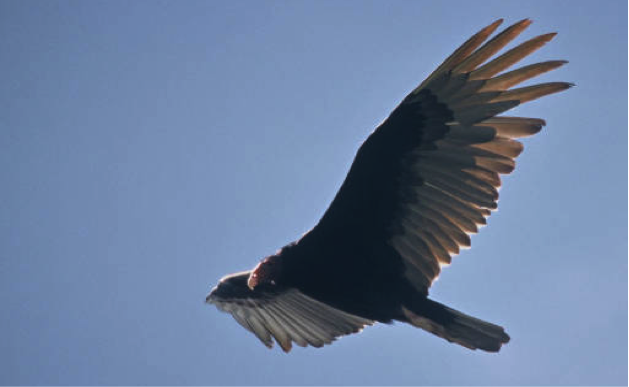
Vultures don’t always get the best rep in our culture, but that doesn’t have to be the case. To get a taste of the more magical side of these great birds, visit the Kern River Valley Turkey Vulture Festival hosted by the Audubon Kern River Preserve Saturday, September 24.
The festival will feature nature walks, bird-banding, kids’ activities, picnics and more—including, of course, Turkey Vultures. In past festivals, some 30,000 Turkey Vultures have passed through the area during the six-week fall migration period. For those people living near Bakersfield or seeking an end-of-summer day trip, The Kern River Turkey Vulture Festival is a free, immersive experience in the natural world.
“We just really want to elevate the Turkey Vulture and give them the respect they deserve,” said Reed Tollefson, director of the preserve and event organizer.
“People aren’t always aware of the valuable role that Turkey Vultures play in keeping our environment clean and beautiful.”
Tollefson added that the birds are also beautiful to look at themselves. Turkey Vultures have a typical wingspan of up to 6 feet, and if you stumble across Turkey Vulture tracks they are typically 6 inches in diameter. More interesting Turkey Vulture facts? They are one of a few bird species that have eyelashes, although we wouldn’t recommend getting close enough to see them. Also, Turkey Vultures’ otherwise-bald heads make it easier for them to scavenge food without making a mess.
While Turkey Vultures are certainly majestic—how could a bird with a 6 foot wingspan not be?—they are also more relatable than other large raptors. In fact, they have been described as clumsy and awkward birds, particularly when on land.
Also unusual: unlike most birds, which are believed to have a poor sense of smell, Turkey Vultures sniff out food from long distances rather than visually spotting it. That’s why it will be the human attendees doing the watching at the festival. Join us!
By Ada Statler-Throckmorton
Monthly Giving
Our monthly giving program offers the peace of mind that you’re doing your part every day.




